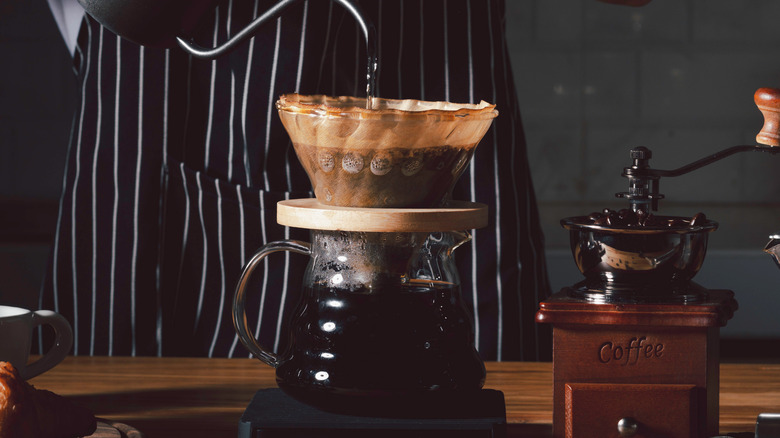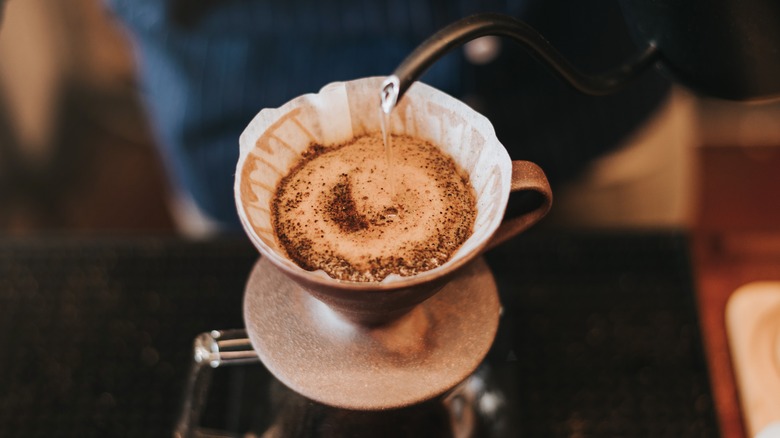The 3 Telltale Signs Of A Perfect Pour-Over Coffee
If you've ever brewed, or been brewed, a cup of pour-over coffee, then you know just how wonderful it can be. When compared to a typical drip machine, we see that the pour-over method, which employs swirling, circular motions, extracts more flavor from the coffee beans because they are more evenly brewed. However, there are three telltale signs to help you determine whether or not a pour-over has been brewed to perfection.
It's a matter of patience and a steady hand — the completed perfect pour-over needs to contain the following elements. First, the coffee grounds need to be as flat as the panhandle, with no peaks or valleys. Two: There needs to be a uniform crust on the grounds, meaning they've maintained the same texture and color. Three: The filter needs to have clean sides, meaning that there are no errant coffee grounds stuck to the side of the filter.
What this tells you is the following: Whoever brewed this pot of pour-over took their time and made sure that the grounds were painstakingly covered by a gentle flow of hot water in order to extract as much flavor from the beans as possible. That's the sign of a perfect pour-over. But how do you do it?
How to achieve perfect pour-over
To achieve perfect pour-over, there are important elements of the technique that require specific attention. The quality of a pour-over is all in how the coffee gets extracted from the grounds. This is where the three signs come into play. If one or more of them is missing or has been ignored, you know the brew is not going to be as good as it could be.
Perfect pour-over starts with the measurement of the beans; using a scale to get the precise desired amount is recommended. To begin the process, wet the filter in whatever receptacle you are using. All pour-over pots, whether a Chemex or Bee House, utilize the same method. Wetting the paper filter before adding the beans reduces any papery flavor in the finished brew, and helps the grounds stay put when you're working.
Remove the water from the pot and add the grounds in a flat layer. Then pour just enough water to cover the grounds for the initial bloom. This allows the grounds to degas, ensuring that your end brew isn't bitter. Once the bloom is done, pour steady concentric circles of water, working from the inside out and back, over the beans so it all stays in one flat layer. After you're finished pouring, use the end of a spoon to scrape any beans that may have made their way to the side of the filter, and fill any holes. This allows for that even extraction for optimal flavor.

